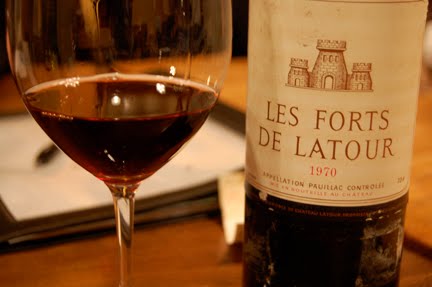March 3, 2011 —
I recently attended a seminar at Grayson College, Designing Varietal Wines & Blending, led by Texas wine industry leader, Dr. Roy Mitchell. Credited with being one of the founders of Texas wine as we know it, Dr. Mitchell has been making wine for over 40 years. I’ve studied under him, worked with him and am always interested in what he’s up to – creating wines and always educating others.
Since I’ve been crafting and blending my own wines for over 20 years, there weren’t any big revelations, however what does continue to surprise me is still how few small wineries and winemakers in the States have little to no experience in the art of blending wines. And some wineries don’t even realize how much better a single varietal wine could be if it were blended with one or more other wines.
Most of the great wines in the world are blends!
Les Forts de Latour, Opus One, Antinori Tignanello, Château d’Aussières Rouge, etc.
As for the US consumer – they have been misled by the industry by labeling wines as single varietals, i.e. Cabernet Sauvignon, Syrah, etc. However, in the States, you need only have 80% of that grape in the wine. But hey, the average consumer probably doesn’t waste much time on this issue – they just want a good wine to drink with dinner. As for the winery and the winemaker – you can’t get off that easily! If you are out to create a wine that is enjoyed by your market, then you need to understand how important blending is to making wine.
So, what’s keeping you from it? Well, as a small winery, you are probably splitting your time between the vineyard, the winery, running the tasting room, marketing, and getting the bills paid. It takes time and experience to blend wines to create one that represents your winery and is enjoyed by consumers. Consider that at UC Davis, while studying enology, we only made a few wines in 3 years. But outside the classroom, I micro-vinified 35 wines during that time, and spent an evening every week blending different commercial varietal labeled wines for no other reason than to learn. In 2003, I submitted 4 different blends of the same wine in a competition to gain insight from the judges’ feedback, which ultimately did not help (don’t get me started on competitions…). I went on to create 116 different blends, comparing them all before finalizing on the gold medal winning blend. The irony in this case is that it could have been labeled as a varietal as it was over 80% of one variety, however, the final blend was from 4 different wines and varietals.
That’s the difference in a mediocre wine and a great wine.
Most small wineries are trying to get something bottled and out to market. In turn what happens is they make an average wine, thereby fostering the chatter that the southwest (TX, OK, CO, AZ, NM) won’t be challenging Napa or Europe anytime soon. We all know starting a winery is more about passion than getting rich quick, but you do have to pay the bills. Time, experience and palate can be the biggest obstacles to creating that premier wine you desire.
But make no mistake – masterful blending is an artisan craft and will ultimately allow you to present to the market the wine you are proud to call your own.
Premier Wine Blends provides custom solutions for your winery.
Finely crafted wine blends, consulting and
local premium bulk wine sourcing (because you’re not a Napa winery!)

One Trackback
[…] most of the great wines of the world are blends. There’s a reason for […]
Comments
Write a comment: